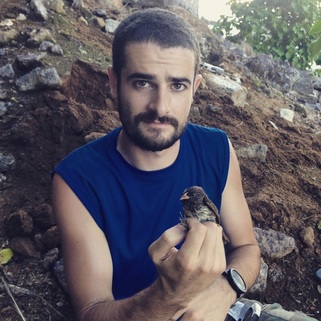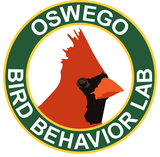
Assistant Professor
Provost Teaching Fellow SUNY Oswego Dept of Biological Sciences 420 Shineman Center 30 Centennial Dr Oswego, NY 13126 [email protected] 315-312-3043 @evornithology Current Research At SUNY Oswego, I study the behavioral ecology of Northern Cardinals and how they are affected by urbanization. Cardinals are excellent urban adapters, making use of bird feeders and habitat modification by humans. My research explores behavioral changes in response to urbanization, and how this behavioral flexibility may allow cardinals to be so successful in human dominated landscapes. The project involves regional fieldwork around Oswego and lab work, all led by SUNY Oswego undergraduates. My students and I also operate the Rice Creek Bird Observatory banding station. Finally, we work with collaborators all over the world to use reflectance spectrometry to analyze avian plumage color variation. ARE YOU AN OSWEGO UNDERGRADUATE SEEKING ORNITHOLOGY RESEARCH EXPERIENCE? FILL OUT THIS FORM AND THEN CONTACT ME VIA EMAIL. Research Overview and History My research is often motivated by bizarre natural history, which inevitably leads me to exciting and fruitful research projects! In 2014, I received my PhD from Cornell University, where I studied how sexual selection influences speciation dynamics in the Red-backed Fairy-wren in Mike Webster's lab. This research entailed demographic studies of mating behavior in several wild populations, experimental manipulations, and genomic analyses. The project revealed strong sexual selection on divergent plumage color and song between two subspecies that results in complex genomic patterns of divergence and introgression. Much of this work is summarized nicely on Jente Ottenburgh's awesome Avian Hybrid Project website. Subsequently, I was awarded an NSF Postdoctoral Research Fellowship to study the evolution of blood feeding in the Vampire Finch of the Galápagos. My home base for this project was Al Uy's lab at the University of Miami. For this research, I am quantifying ecological, behavioral, and genomic variation among blood-feeding and non-blood-feeding populations. I then became a Postdoctoral Research Associate in Christie Riehl's lab at Princeton University studying phenotypic plasticity in desert and woodland breeding populations of the Phainopepla in southern California. This research culminated in a paper combining GPS tracking, population genomics, and spatial analyses to document the bizarre life-history strategy of itinerant breeding in this species. Check out this amazing YouTube video by Jaret Davey that tells much of the story. |

